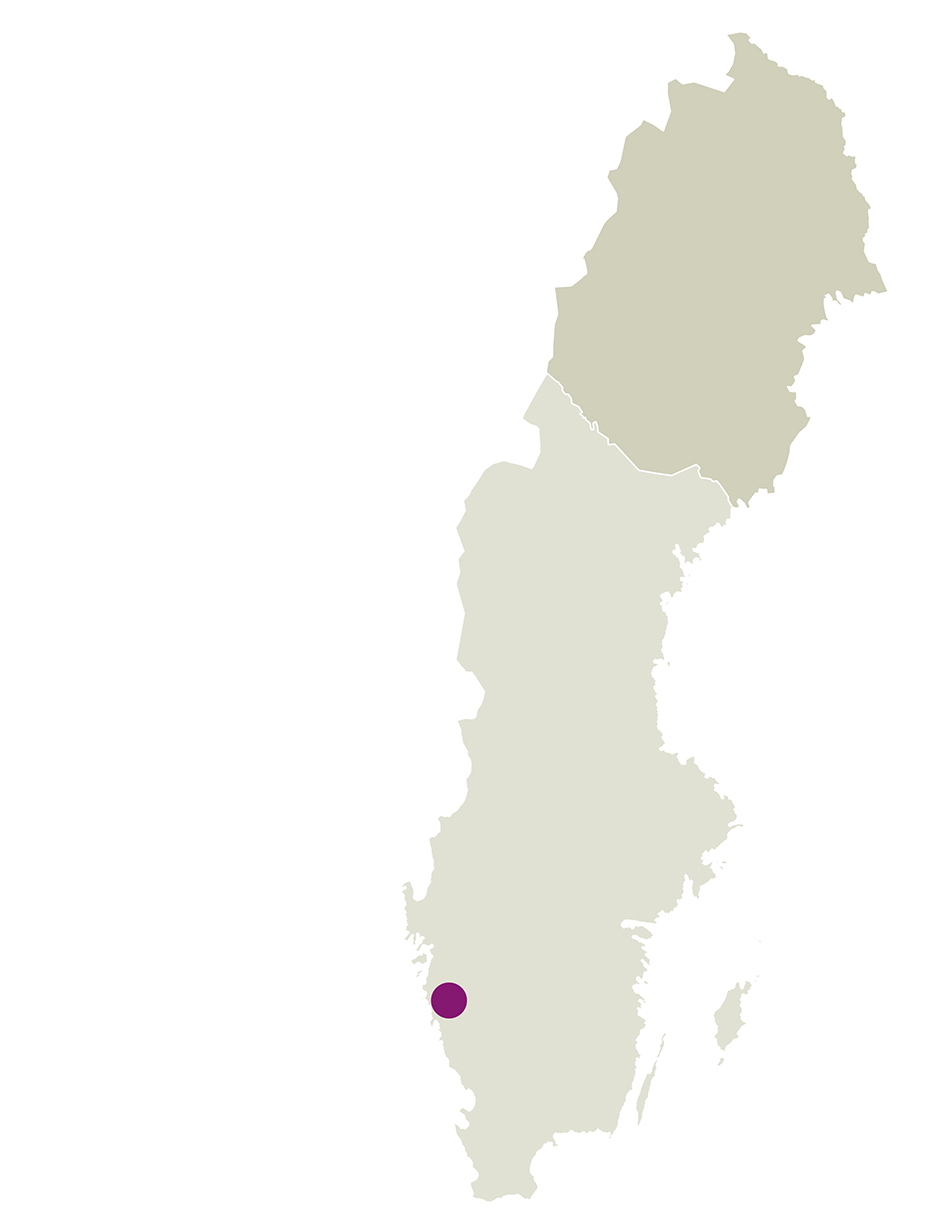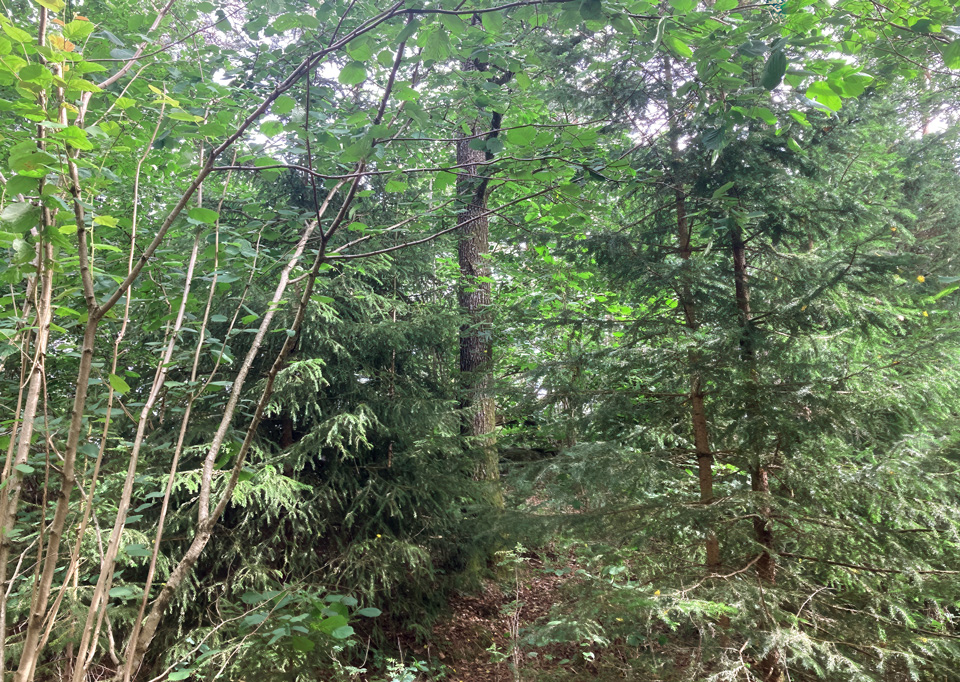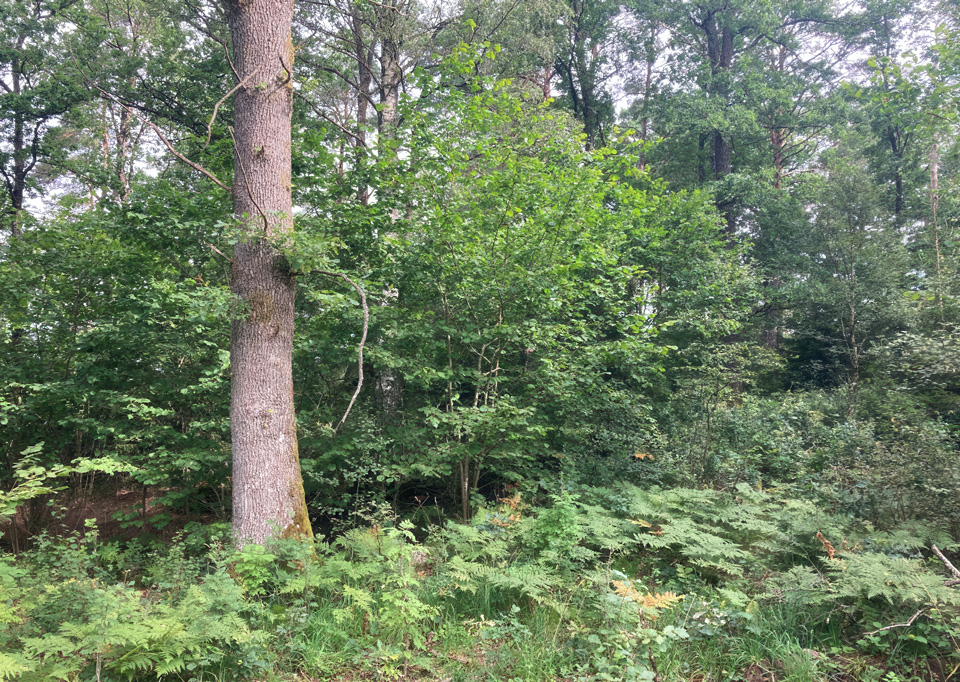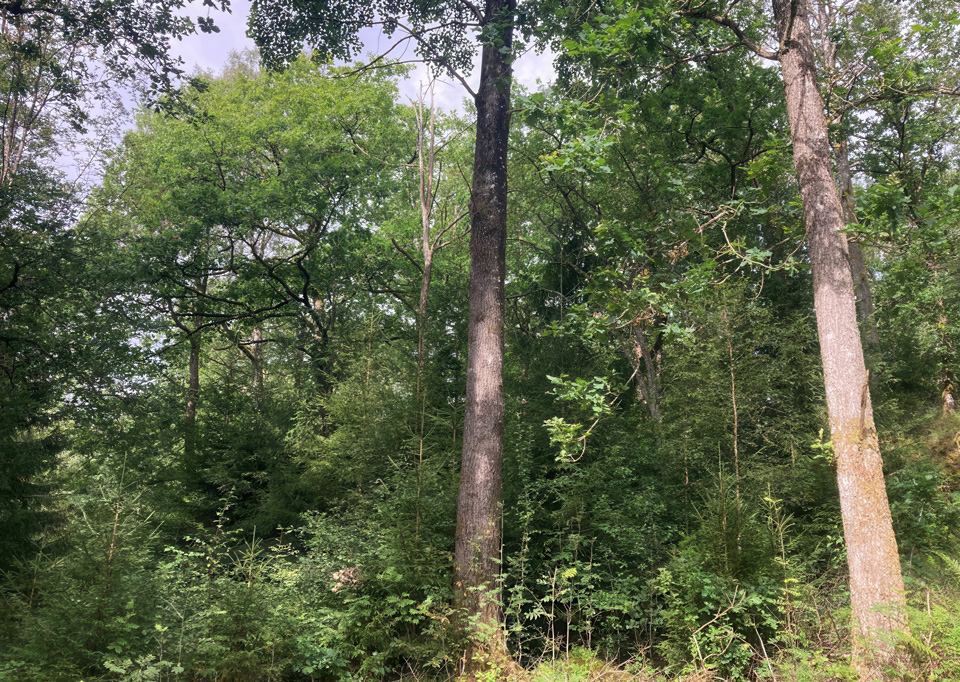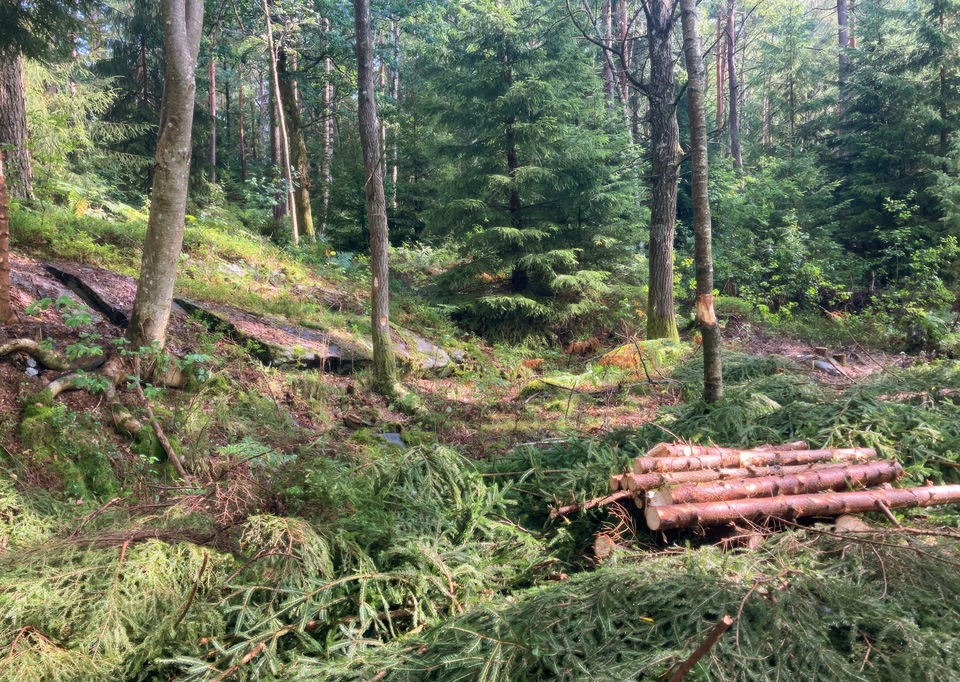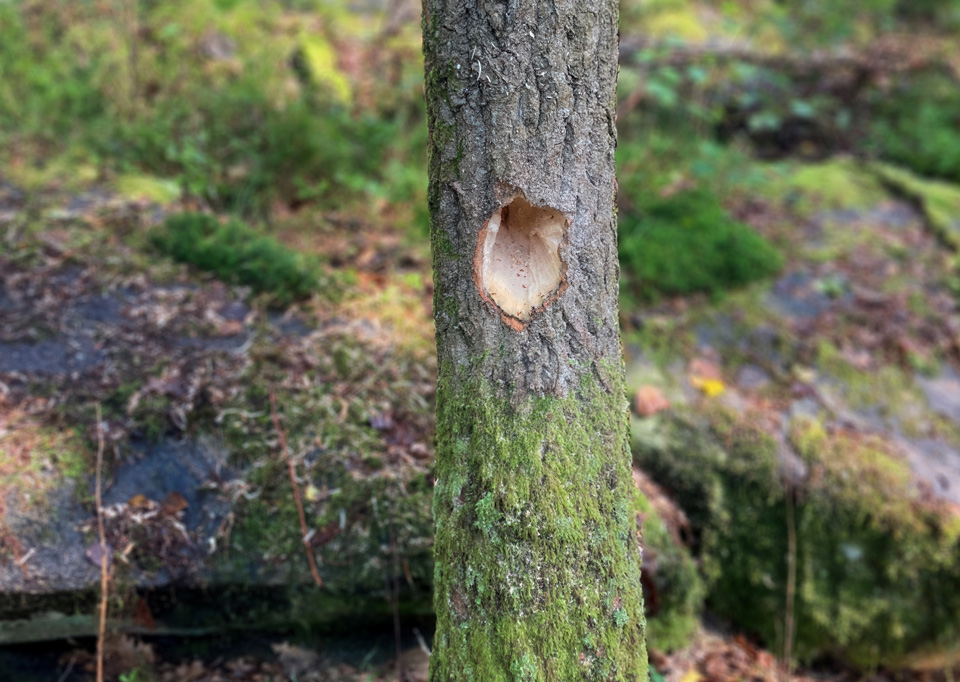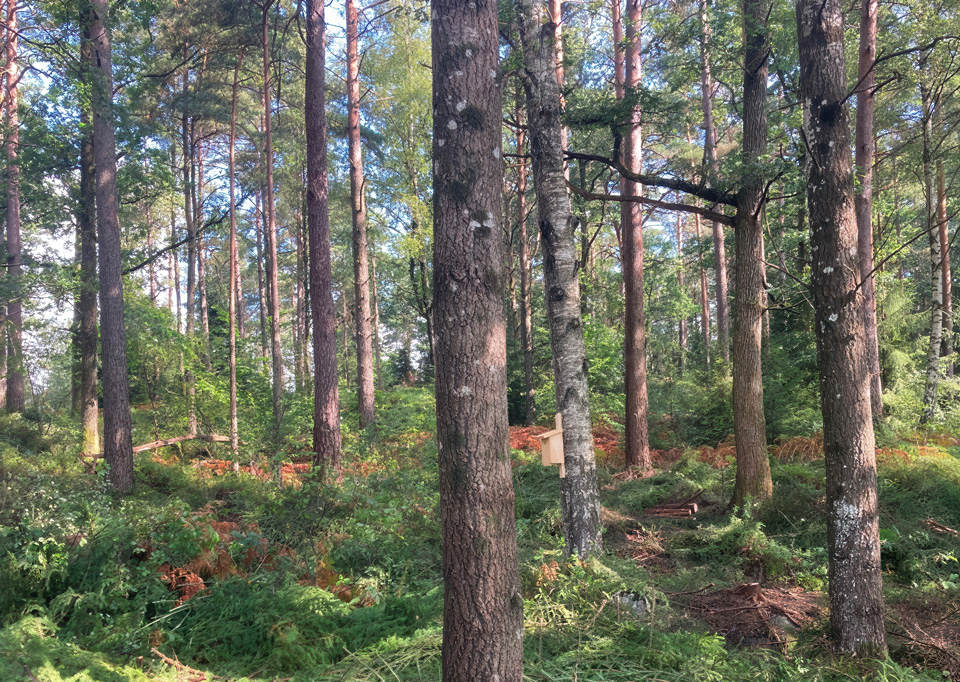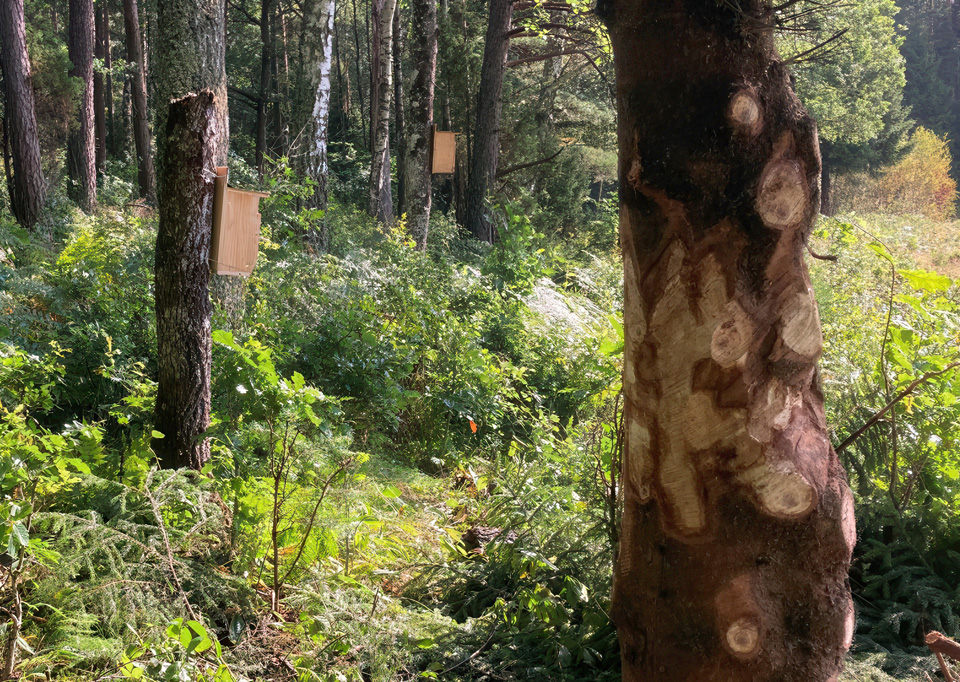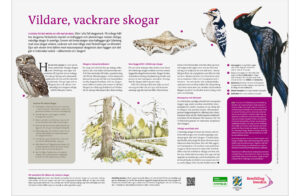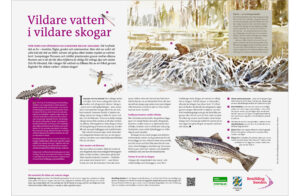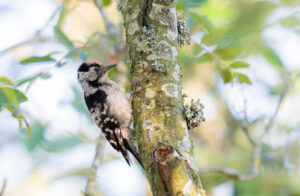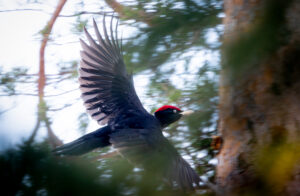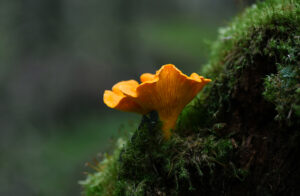About the initiative
The forest rewilding project in Vråssered, northeast of Gothenburg in southern Sweden, was designed to create a demonstration site for continuous cover forestry and close-to-nature forest management. The purpose was to show policymakers alternatives to clear-felling and to inspire local landowners by demonstrating how forests can be managed to benefit both biodiversity and climate resilience – without being clear-felled. Before restoration, the forest was dense, drained and dominated by spruce. The interventions aimed to increase diversity in tree species, structural complexity, and available habitats.
Young spruces in the understorey were thinned and piled to create so-called creotopes – small habitat features valuable to fungi, insects, and small mammals. Larger spruces were girdled to die standing, providing deadwood for insects and cavity-nesting birds. Oaks and aspens were selectively released from competition to give them more light and space. Natural water regimes were restored by filling in old drainage ditches and creating small wet features for amphibians and aquatic invertebrates. Selected broadleaved trees were intentionally damaged using veteranisation techniques to speed up deadwood formation – essential for many specialist species such as birds. Around fifty nest boxes were installed, and interpretive signs were produced to help visitors understand the restoration.
The interventions were carried out in summer 2024, jointly planned by Rewilding Sweden and ecologists from the City of Gothenburg. Fieldwork was carried out by ecological consultants from Miljöteknik i Väst. The intervention is part of a broader project funded by the Swedish Postcode Foundation, with most activities conducted in the Vindelälven–Juhttátahkka UNESCO Biosphere Reserve in Västerbotten.
Funding: The Swedish Postcode Lottery FoundationCollaborating organisations: City of Gothenburg
